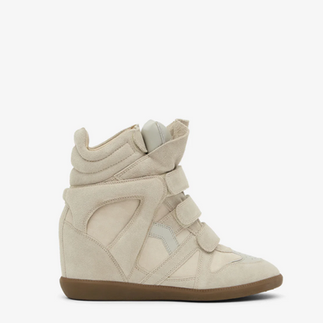When imitation threatens fashion authenticity
- Trust-Place
- May 5
- 4 min read
Updated: Jul 31
FROM TREND TO STRATEGIC RISK
We are now seeing a sharp rise in “dupes” — products that imitate the design of high-end fashion items without being exact counterfeits.

PHOTO-ILLUSTRATION: WIRED STAFF/GETTY
These lookalike products, once niche, have become mainstream. They are promoted widely on
social media, mass-produced by fast fashion brands, and openly marketed as “dupes.”
While they may seem harmless at first glance, they present a growing risk to fashion and luxury brands — both in terms of revenue and brand integrity
How can luxury houses protect their designs in a market where being copied is seen as a compliment—and a competitive tactic?
THE RISE OF THE FASHION DUPE CULTURE
Dupes are everywhere.
Dupes have become a permanent fixture in the fashion ecosystem, especially among Gen Z consumers. On TikTok, Instagram, and YouTube, hashtags like #dupe and #luxurydesignforless fuel a viral economy where influencers compare low-cost alternatives to luxury items — not as counterfeits, but as clever “finds” that capture the look of iconic designs at a fraction of the price.
These products rarely use logos or trademarks. Instead, they replicate key design elements: silhouettes, materials, color palettes, or signature hardware — enough to evoke the original without claiming to be it. As Vogue, Business of Fashion, and Journal du Luxe report, this is not just about affordability. It’s a cultural shift. Consumers are embracing dupes as a form of style expression, detached from brand loyalty, provenance, or long-term value.
Virality accelerates this trend. Coach’s Pillow Tabby bag, for instance, became a TikTok favorite, dubbed “bag of the year” — spawning a wave of lookalikes and boosting visibility for both originals and imitations. But the deeper impact is strategic: dupe culture challenges long-held assumptions about exclusivity, aspiration, and authenticity in luxury.
For brands, the line between inspiration and appropriation is becoming harder to draw. And as the market adapts to this new normal, protecting creative identity is more complex — and more critical — than ever.
A few examples:
Hermès Birkin Bag: From €10,000 to under €78 online
Burberry Trench Coat: €1,800 vs. €45 lookalike
Isabel Marant Bekett Sneakers: Original €495, dupe €58
These items are not just inspired — they are systematically reverse-engineered for virality.
THE HIDDEN COST OF THE DUPE TREND
What’s the real impact of this trend for fashion houses?
Dilution of brand identity - When a design becomes ubiquitous through imitation, it loses its aura of exclusivity. The icon becomes ordinary. The original loses meaning.
Erosion of creative value - Brands invest heavily in design, innovation, and craftsmanship. Dupes reduce this to a visual template that anyone can mimic — without the effort, quality, or ethics.
Revenue loss and diverted demand - For every dupe sold, there’s a potential customer lost — someone who chooses the copy over the original, whether for budget or convenience.
A damaged second-hand market - Without clear proof of authenticity, the resale value of genuine pieces suffers. How can a buyer tell the difference?And more importantly, why would they pay more for something that looks identical?
A crisis of trust - From resellers to collectors to loyal fans, everyone loses confidence when real and fake become indistinguishable.
The ripple effect? A weaker brand ecosystem overall.
BEYOND LEGAL ACTION: THE NEED FOR INNOVATION
Counterfeits are illegal. Dupes are often legal — but damaging.
Traditional legal action is rarely effective in stopping this growing grey zone.
What’s needed now is a new form of proof — one that can restore clarity, reinforce trust, and protect originality in a crowded market.
DIGITAL CERTIFICATE: A STRATEGIC RESPONSE
Some forward-thinking fashion brands, like Isabel Marant, are taking the lead — by choosing digital authentication to defend their designs.
With Trust-Place’s digital certificate, each item receives:
A tamper-proof certificate of authenticity
A secure, blockchain-verified identity
A trackable history of ownership and use
This makes every product easier to verify, harder to copy, and more valuable over time — especially in the second-hand market.
REINVENTING CUSTOMER EXPERIENCE AROUND AUTHENTICITY
In a market flooded with lookalikes, selling a product is no longer enough. Brands need to create a complete, authentic experience that can't be copied.
With Trust-Place:
Every purchase becomes a point of entry into a premium brand experience — including product registration, exclusive content, private invitations, and tailored services.
The digital certificate keeps the connection alive, long after the initial sale, even through second-hand ownership.
Products become part of a trusted ecosystem where authenticity, traceability, and brand loyalty are built in — and impossible to duplicate.
Trust-Place helps fashion brands turn each item into:
A credible, high-value asset, supported by transparent authentication
A long-term customer touchpoint, enabling resale, trade-in, or loyalty programs
A competitive edge, by offering what no dupe can: trust, continuity, and real value
DON’T LET IMITATION DEFINE YOUR BRAND

Dupes are not a compliment — they are a symptom of a broken relationship between brand and customer.
In an age of speed, virality and mass replication, authenticity is a competitive advantage.
With the right tools, brands can reclaim control, protect their designs, and redefine what value truly means.
Want to know how Trust-Place helps fashion brands protect their icons?
Let’s talk about securing your products, your creativity, and your customer relationships.











